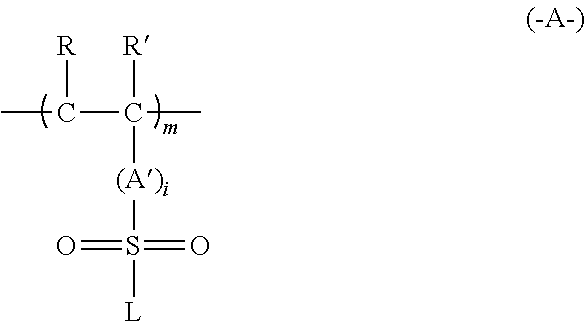Electroless plating method
a technology of electroless plating and metallic pattern, which is applied in the field of electroless plating method, can solve the problems of affecting the physical health of the human body or neighboring devices or instruments, affecting the quality of the metal, and the use of ito coating, so as to promote polymer crosslinking, promote strong adhesion of the polymeric layer, and increase the hydrophilicity of the exposed region
- Summary
- Abstract
- Description
- Claims
- Application Information
AI Technical Summary
Benefits of technology
Problems solved by technology
Method used
Image
Examples
##ventive example 1
Inventive Example 1
[0211]Polymer A was dissolved in dichloromethane solvent to 15% solids as described above and 3.3 g of this Polymer A solution was added to 1.7 g of cyclopentanone. The resulting reactive composition was spin coated on a PET substrate to form a precursor article. After being dried, the resulting polymeric layer was exposed through a mask to an Oriel high intensity UV lamp for 600 seconds. The exposed polymeric layer was then contacted at room temperature with a 1 weight % solution of dimethylamine borane (DMAB) for 5 minutes, followed by a 2 minute distilled water rinse, and contact with a 0.4 molar silver nitrate solution for 3 minutes. The polymeric layer was rinsed with distilled water for 2 minutes and then immersed in electroless copper plating bath C1 at 20° C. for 3 minutes. The resulting copper pattern was then washed in distilled water for 4 minutes and dried under compressed nitrogen. A continuous copper film was formed in all exposed regions of the poly...
##ventive example 2
Inventive Example 2
[0214]Polymer K was dissolved in dichloromethane solvent to 15% solids as described above and 3.3 g of this Polymer K solution was added to 1.7 g of cyclopentanone. The resulting reactive composition was spin coated onto a PET substrate to form a precursor article. After being dried, the resulting polymeric layer was exposed through a mask to an Oriel high intensity UV lamp for 600 seconds. The exposed polymer layer was then contacted at room temperature with a 1 weight % solution of dimethylamine borane (DMAB) for 5 minutes, followed by a 2 minute distilled water rinse, and contact with a 0.4 molar silver nitrate solution for 3 minutes. The treated polymeric layer was rinsed with distilled water for 2 minutes and then immersed in electroless copper plating bath C1 at 20° C. for 3 minutes. The resulting copper pattern was then washed in distilled water for 4 minutes and dried under compressed nitrogen. A continuous copper film was formed in all exposed regions of ...
PUM
| Property | Measurement | Unit |
|---|---|---|
| width | aaaaa | aaaaa |
| weight % | aaaaa | aaaaa |
| energy | aaaaa | aaaaa |
Abstract
Description
Claims
Application Information
 Login to View More
Login to View More - R&D
- Intellectual Property
- Life Sciences
- Materials
- Tech Scout
- Unparalleled Data Quality
- Higher Quality Content
- 60% Fewer Hallucinations
Browse by: Latest US Patents, China's latest patents, Technical Efficacy Thesaurus, Application Domain, Technology Topic, Popular Technical Reports.
© 2025 PatSnap. All rights reserved.Legal|Privacy policy|Modern Slavery Act Transparency Statement|Sitemap|About US| Contact US: help@patsnap.com



